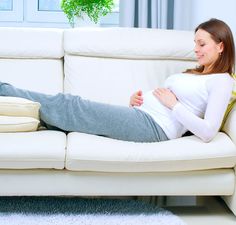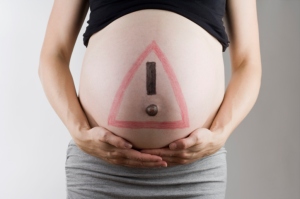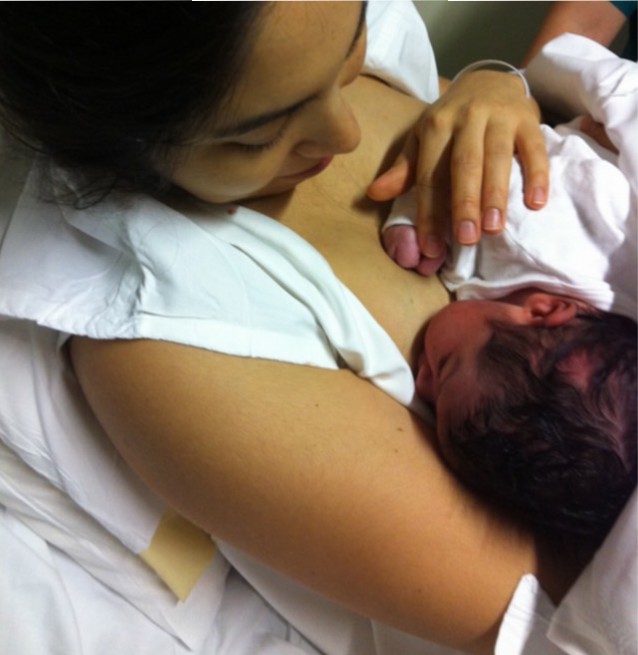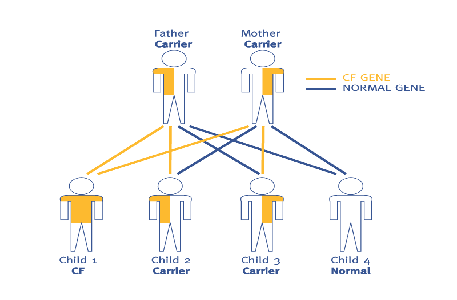 Almost there! The third trimester is full of expectation, as the moment you will hold the baby in your arms approaches. But the excitement comes with a lot of uncomfortable symptoms…
Almost there! The third trimester is full of expectation, as the moment you will hold the baby in your arms approaches. But the excitement comes with a lot of uncomfortable symptoms…
The third trimester lasts from the 7th through the 9th month of pregnancy, that is, from week 28 till the moment you give birth, usually around week 40. This period can be challenging and tiring, as your womb grows and creates a lot of discomfort. Most of the symptoms you will experience are those that appeared during the second trimester, although they will be more intense now: back pain, leg swelling, sleep problems, itchy skin…
But keep a positive attitude! Read this list with the most common symptoms of the last three months of pregnancy and learn what you can do to relieve them. We will focus on the symptoms that appear during the third trimester, or that are somewhat different now. This is what you can expect:
1) Abdominal muscle separation
 As your uterus grows, it pushes against the abdominal wall and stretches its muscles (the ‘six pack’ muscles), which will start separating in the middle and cause a bulge, or gap in the middle of the abdomen. This condition, called diastasis recti abdominis, is more evident when the abdominal muscles are tense, such as during coughing or getting up from a lying down position. Diastasis recti can cause lower back pain, making it difficult to carry out certain activities, such as lifting objects.
As your uterus grows, it pushes against the abdominal wall and stretches its muscles (the ‘six pack’ muscles), which will start separating in the middle and cause a bulge, or gap in the middle of the abdomen. This condition, called diastasis recti abdominis, is more evident when the abdominal muscles are tense, such as during coughing or getting up from a lying down position. Diastasis recti can cause lower back pain, making it difficult to carry out certain activities, such as lifting objects.
Not all women develop abdominal muscle separation; you are more likely to get it if you are older than 35 years-old, have a multiple pregnancy or carry a large baby, or have repeated pregnancies.
What can you do about it:
- Muscle separation lessens in the months that follow delivery, although some degree of separation may remain. Certain exercises will help you regain abdominal strength after childbirth.
- During pregnancy, avoid aggressive abdominal exercises (such as sit-ups), which may provoke or worsen diastasis recti.
- If abdominal muscle weakness associated with diastasis recti is interfering with your daily activities, seek the advice of your care provider or a specialized physiotherapist, who can indicate certain strength and postural correction exercises.
2) Breast leakage
 By the end of pregnancy, you may notice a yellowish fluid leaking from your nipples, and this is normal. This substance, called colostrum, will nourish your baby in the first few days after birth.
By the end of pregnancy, you may notice a yellowish fluid leaking from your nipples, and this is normal. This substance, called colostrum, will nourish your baby in the first few days after birth.
While some women leak quite a lot of colostrum, others don’t leak at all. Leaking won’t make any difference to how much milk you will produce once your baby is born.
What can you do about it:
- If you just leak a few drops, then you don’t need to do anything. But if it bothers you, you may wear nursing pads inside your bra to absorb the milk.
- You should call your doctor or midwife if the nipple discharge becomes bloodstained.
3) Carpal tunnel syndrome
 Tingling, numbness, weakness and pain in the hands during the last trimester are usually caused by a condition called carpal tunnel syndrome (CTS).
Tingling, numbness, weakness and pain in the hands during the last trimester are usually caused by a condition called carpal tunnel syndrome (CTS).
CTS is common in pregnancy, and happens due to the fluid retention in the tissues of the wrist, which in turn squeezes a nerve (the median nerve), that runs down to your hand and fingers. Women that keep doing forceful or repetitive hand and finger movements (such as long hours at a computer, or the use of vibrating equipment) may have worse symptoms.
What can you do about it:
CTS usually disappears without treatment after childbirth, when pregnancy-related fluid buildup is relieved. In the meantime, you may try the following:
- Avoid activities that may be causing symptoms.
- Wear a wrist splint to keep your wrist straight, especially at night, when the symptoms can be more bothersome.
- Do exercises to stretch and strengthen the muscles in the hand and arm.
- Alternative therapies, such as acupuncture might help relieve hand pain.
- If nothing works, talk to your doctor, who may prescribe certain medications.
- Surgery is the last resort treatment, but unless CTS become intolerable, it will be delayed until after birth.
4) Dreams and nightmares
 You knew about the sleep problems during pregnancy. But you may get surprised, even disturbed when you start getting frequent and vivid dreams, occasionally nightmares; you may also realize that you remember your dreams more clearly.
You knew about the sleep problems during pregnancy. But you may get surprised, even disturbed when you start getting frequent and vivid dreams, occasionally nightmares; you may also realize that you remember your dreams more clearly.
The exact reason of these changes in the dream pattern is not clear, but they seem to be related to hormonal and emotional factors, as well as the frequent sleep disruptions that come with pregnancy (read more here).
What can you do about it:
- If your dreams are just more frequent or more vivid, you will just have to cope with them.
- However, if you have frequent nightmares, that are too disturbing, don’t let you sleep or cause you intense anxiety, you may consider sharing them with a friend, your doctor, or a therapist.
5) Clumsiness, waddling
 You may have noticed that, as pregnancy progresses, you get clumsier: things fall from you hands, you bump into doors, you may accidentally fall down! It is not just you, clumsiness is normal in pregnancy and is related to many factors: you are heavier and your growing womb changes the center of gravity, making it more difficult to move; your “pregnancy brain” makes it harder for you to concentrate on your activities; in addition, a hormone called relaxin relaxes all the joints in your body. Therefore, you won’t have the balance or dexterity you used to have.
You may have noticed that, as pregnancy progresses, you get clumsier: things fall from you hands, you bump into doors, you may accidentally fall down! It is not just you, clumsiness is normal in pregnancy and is related to many factors: you are heavier and your growing womb changes the center of gravity, making it more difficult to move; your “pregnancy brain” makes it harder for you to concentrate on your activities; in addition, a hormone called relaxin relaxes all the joints in your body. Therefore, you won’t have the balance or dexterity you used to have.
The same reasons explain why, at the end of pregnancy, you will start waddling, which in turn will make you even clumsier!
What can you do about it:
Clumsiness is normal and there is not much you can do to prevent it. However, it is important that you take measures to protect yourself -and others- from accidents:
- Avoid situations where you have a high risk of falling, such as standing on a ladder, using stairs, riding a bicycle, etc.
- Wear comfortable shoes, that should not be neither too flat or too high (read more here).
- Pay attention whenever you walk on wet, icy, or uneven surfaces.
- Avoid gaining too much weight, which will make clumsiness much worse.
- Call your doctor if, besides clumsy, you feel dizzy or lightheaded, your have blurred vision, headache, or any pain.
6) Emotional changes
 As you get closer to childbirth, your anticipation grows, so do your anxiety, fears and concerns! Besides all the hormonal-related emotional changes, you may start getting worried about the delivery itself, as well as all the changes the baby will bring, your role as a parent, etc (see here).
As you get closer to childbirth, your anticipation grows, so do your anxiety, fears and concerns! Besides all the hormonal-related emotional changes, you may start getting worried about the delivery itself, as well as all the changes the baby will bring, your role as a parent, etc (see here).
What can you do about it:
- Stay calm, mild physical activity can help (read here), eat well (here), indulge yourself with a beauty treatment! (here).
- Taking childbirth classes can help you feel more prepared to face labor and delivery.
- Discuss your emotions and fears with your doctor or midwife.
- Sharing your feelings with friends, your partner or other moms-to-be can be very helpful.
- Nevertheless, if you feel constantly down or overwhelmed, if you have negative or suicidal thoughts, if you can’t go ahead with your daily life you must discuss it with your doctor.
7) Fatigue
 Forget the energy you had during the second trimester: fatigue is back! Carrying extra weight, waking up several times during the night to go to the bathroom, and dealing with the anxiety of preparing for a baby can all decrease your energy level.
Forget the energy you had during the second trimester: fatigue is back! Carrying extra weight, waking up several times during the night to go to the bathroom, and dealing with the anxiety of preparing for a baby can all decrease your energy level.
What can you do about it:
- Eat healthy, frequent and small meals: it’s a good idea to keep with you healthy snacks that you can grab whenever you feel out of energy.
- If you work, take regular, small breaks; you may even consider taking a quick nap!
- Light exercise can make you feel more energetic: walking, swimming or prenatal yoga are good options, but listen to your body! Don’t force yourself.
- Check with your doctor if you feel extremely tired, so that she/he may do some blood test to rule out anemia or other problems.
8) Forgetfulness (“Pregnancy brain”)
 It’s not a myth: intense forgetfulness, known as “pregnancy brain” is a normal symptom of pregnancy, which nevertheless can be very annoying!
It’s not a myth: intense forgetfulness, known as “pregnancy brain” is a normal symptom of pregnancy, which nevertheless can be very annoying!
It is mostly related to pregnancy hormones, but sleep disturbances and fatigue can make it worse.
What can you do about it:
Don’t worry! Your brain will work normally again after delivery. Well, sort of, as you will have to deal with the sleepless nights while taking care of your baby 😉
In the meantime, these tips may help:
- Stay organized! Write down what you need to do, technology may help: reminders on your phone or to-do lists in your computer will make it easier.
- Ask for help: cut down on what you’re responsible for by delegating some jobs to others.
- Eat well: certain foods may boost your memory: eating plenty of choline-rich foods and DHA-rich foods during pregnancy may help boost your -and your baby’s- brain function.
9) Frequent urination, urinary incontinence
 As your baby grows, the pressure on your bladder increases, causing a constant feeling you need to go to pee. This may be worse during the night, because when you lie down, the fluids you retained in your legs and feet during the day make its way back into your bloodstream and eventually into your bladder.
As your baby grows, the pressure on your bladder increases, causing a constant feeling you need to go to pee. This may be worse during the night, because when you lie down, the fluids you retained in your legs and feet during the day make its way back into your bloodstream and eventually into your bladder.
Many women also experience stress urinary incontinence, that is, they lose some urine when they cough, laugh, sneeze, lift heavy objects, or exercise.
What can you do about it:
To reduce frequent urination:
- Avoid beverages that contain caffein, which has diuretic effect.
- It’s not a good idea to cut down on fluids, as your body needs plenty of them during pregnancy. Instead, you may reduce fluid intake in the hours before you go to bed.
- Lean forward when you urinate: this helps empty out your bladder better.
To avoid incontinence:
- Empty your bladder before exercising.
- Wear a panty liner to catch any unexpected leakage.
- Kegel exercises, which strengthen the muscles of the pelvic floor, can also help minimize stress incontinence.
You should inform your doctor or midwife if you feel pain or burning with urination, if your see blood when you wipe or if you feel the urge to pee even when you produce just a few drops at a time. These could be signs of a urinary tract infection (UTI).
10) Heartburn
 Another symptom you may have experienced during the first three months of pregnancy, got better during the second trimester but now came back! While the heartburn you experienced during the first trimester was hormone-related, now your enlarged uterus is to blame, as it crowds the abdomen, pushing the stomach acids upward.
Another symptom you may have experienced during the first three months of pregnancy, got better during the second trimester but now came back! While the heartburn you experienced during the first trimester was hormone-related, now your enlarged uterus is to blame, as it crowds the abdomen, pushing the stomach acids upward.
What can you do about it:
- Eat small, frequent meals, don’t eat too much before going to bed.
- Avoid too spicy, greasy, acidic or sweet foods.
- Don’t lie flat, sleep with two or more pillows to have your head at a higher level than your body.
- Call your doctor if you can’t cope with heartburn, who can prescribe you an antiacid medication that is safe for pregnancy.
11) Pelvic pain
Once you’re in your third trimester, you may experience pain and pressure in your pelvic region, as the weight of your growing fetus presses down on certain nerves that run into the legs; for the same reason you may also feel tingling, numbness and pain along the outer thigh; which can be very annoying for some women.
Relaxed pelvic joints are a common cause of pelvic pain: toward the end of your pregnancy the hormone relaxin helps the ligaments become loose in preparation for childbirth. This hormone can also loosen your pelvic joint, and even cause it to separate a bit. It’s common to feel pain near your pubic bone, and you may also feel like your legs are unstable. This is called Symphysis pubic dysfunction (SPD).
Your fetus’s head can also to rub your tailbone, causing tailbone pain and pressure. The condition is called coccydynia and occasionally the pain can be very intense.
Braxton Hicks contractions can also cause pressure and tightening in the pelvis (see below). Constipation also can cause pelvic pain or discomfort (see here).
What can you do about it:
Be patient! Once your baby is born, all the pressure-related symptoms will be gone; in addition, relaxin production will cease and the joints will be firm again, easing your pain. In the meantime:
- Get plenty of rest; a change of position that shifts the pelvic pressure away from the nerves responsible for the pain should provide some relief.
- Avoid lifting heavy things.
- Warm compresses on the painful the area may ease soreness.
- Pelvic support belts can help stabilize the area.
- If the pain is severe enough, ask your doctor about painkillers.
12) Swelling
 During the second trimester some women experience some swelling of the ankles and feet. Now, swelling – or edema will be also evident in the hands, face and upper legs.
During the second trimester some women experience some swelling of the ankles and feet. Now, swelling – or edema will be also evident in the hands, face and upper legs.
Swelling is normal and is caused by the excess blood and fluids your body produces to meet the baby’s needs. This extra fluid will also soften the body and help it expand as the baby grows, and prepare the joints and tissues to open more easily during delivery.
Swelling is usually worse with warm weather, if you stand up for long periods of time, if you consume too much caffeine or salty foods, or if your diet is low in potassium.
What can you do about it:
- Reduce salt intake, avoid adding extra salt to meals.
- Avoid caffeine consumption.
- Eat foods high in potassium (such as bananas).
- Minimize outdoor time when it’s hot.
- Avoid long periods of standing or sitting.
- Move regularly your feet, or keep your legs elevated while sitting.
- Wear comfortable shoes (read more here).
- Avoid clothes that are tight around your wrists or ankles.
- Wear supportive tights or stockings.
- Get plenty of rest, swimming may also help.
- Use cold compresses on swollen areas.
13) Shortness of breath
 As your pregnancy progresses you may start feeling breathless after minimal amounts of physical exertion, or even when talking!
As your pregnancy progresses you may start feeling breathless after minimal amounts of physical exertion, or even when talking!
Mild breathlessness is totally normal; during early pregnancy is due to pregnancy hormones, which make you take more and deeper breaths, so that you get additional oxygen for the baby. But in the third trimester, shortness of breath is mostly related to your expanding uterus putting pressure on the lungs and diaphragm, making it harder to take a deep breath.
What can you do about it:
- Don’t overdo it with your daily activities or while exercising; when you feel breathless, slow down.
- Make room for your lungs to take air: stand up straight, don’t sit down for long periods of time, sleep propped up on pillows.
- If the shortness of breath is severe, you have chest pain or a quick pulse, call your doctor immediately.
14) Vaginal discharge
 Increased vaginal secretions are completely normal and start during the first trimester. These discharge helps prevent infections travelling up from the vagina to the womb.Towards the end of pregnancy, the amount of discharge increases and can be confused with urine; close to delivery it may even contain streaks of thick mucus and some blood (this is called “bloody show”; we will discuss more about it in another post). Vaginal secretions should be white or clear, and should not smell unpleasant.
Increased vaginal secretions are completely normal and start during the first trimester. These discharge helps prevent infections travelling up from the vagina to the womb.Towards the end of pregnancy, the amount of discharge increases and can be confused with urine; close to delivery it may even contain streaks of thick mucus and some blood (this is called “bloody show”; we will discuss more about it in another post). Vaginal secretions should be white or clear, and should not smell unpleasant.
What can you do about it:
- You may wear panty liners, but do not use tampons.
- Prefer cotton underwear, avoid string or thongs that may cause intense rubbing, which together with the increased discharge can favor yeast or other infections.
- Avoid vaginal douching (which is never a good idea, but especially during pregnancy).
- Pay attention to washes and wipes that could be irritating, increasing your chances of a vaginal infection.
- Call your doctor or midwife if you have discharge that is yellow, green or foul-smelling, if you have intense itching or burning, symptoms that may show that you have a vaginal infection. Likewise, call your healthcare provider if you have a lot of watery, vaginal discharge, which may signal that you broke your water bag.
15) Vulvar varicose veins
 If you feel something “like worms” on your genital area, together with some pressure, swelling of discomfort in the vulva, don’t panic! These are dilated vulvar veins and occur due to the increased blood flow to the area, and the pressure the growing uterus puts on the veins of your lower body. Vulvar varicosities are seen quite often during pregnancy, either alone or with varicose veins of the legs, or hemorrhoids. Long periods of standing, exercise and sex can aggravate them. Occasionally though, they are completely asymptomatic, and the only way you’ll know you have them is because your doctor tells you.
If you feel something “like worms” on your genital area, together with some pressure, swelling of discomfort in the vulva, don’t panic! These are dilated vulvar veins and occur due to the increased blood flow to the area, and the pressure the growing uterus puts on the veins of your lower body. Vulvar varicosities are seen quite often during pregnancy, either alone or with varicose veins of the legs, or hemorrhoids. Long periods of standing, exercise and sex can aggravate them. Occasionally though, they are completely asymptomatic, and the only way you’ll know you have them is because your doctor tells you.
What can you do about it:
Most of the times, vulvar varicosities don’t affect your mode of delivery, and they go away on their own after birth. If they are bothersome, you may try the following:
- Wear support garment specifically designed for vulvar varicosities.
- Avoid standing for long periods of time.
- Swimming helps lift the baby from the pelvis and improves blood flow, relieving your pain.
- Elevate your hips slightly when lying down to promote circulation; you may place a folded towel beneath your hips.
- Cold compresses applied to your vulva may ease discomfort.
What else to expect
Baby movements
 During the second trimester and beginning of the third, your baby has plenty of room in the womb, so most likely you will feel pushing, swirling, twisting, and kicking. But as he/she grows bigger, there is less space for movement; thus probably you won’t get the punches and kicks you were used to. Instead, you’ll feel more wiggles, stretches and turns. Although by the end of pregnancy mobility may be reduced when he gets engaged in the pelvis, the baby should keep moving until the moment he is born.
During the second trimester and beginning of the third, your baby has plenty of room in the womb, so most likely you will feel pushing, swirling, twisting, and kicking. But as he/she grows bigger, there is less space for movement; thus probably you won’t get the punches and kicks you were used to. Instead, you’ll feel more wiggles, stretches and turns. Although by the end of pregnancy mobility may be reduced when he gets engaged in the pelvis, the baby should keep moving until the moment he is born.- Keep in mind though that the baby is not constantly on the move: there are times when she sleeps. Towards the end of your pregnancy, the baby rests for about 20 minutes at a time, but occasionally the rest periods may be as long as 50 or 75 minutes.
- Although you may have read or heard you need to count the baby’s kicks, there is a huge variation among babies, and no normal values for baby’s kicks have been determined; therefore, a written record of your baby’s movements is not necessary. Since every baby has a different pattern of waking and sleeping, what is important is to follow up on your baby’s own pattern of movements. If you notice a change in your baby’s pattern of movements, or are worried at any stage, contact your midwife or doctor, so that they can check the baby’s wellbeing with certain specific tests.
- At some point you may not be sure whether you felt your baby kicking. Keep in mind that you’re more likely to be aware of your baby’s movements when you’re lying down rather than sitting or standing. Therefore, in the doubt, have a snack, particularly something sweet, lie down on your side and wait. You may also try making some noise, or playing loud music. If your baby starts moving around, most likely everything is fine.
But you should contact your midwife or doctor right away if you notice any of the following:
- You don’t feel several movements while lying on your side for two hours.
- Your baby doesn’t start to move in response to noise or some other stimulus.
- There’s a big decrease in your baby’s movements, or a gradual decrease over several days.
Weight gain
 You should aim for a weight gain of about 1-2 kg per month during your third trimester, but it is not unusual to lose 1 or 2 kilos by the end of pregnancy, as your stomach gets compressed by the baby and you get a feeling of fullness even with small meals. In total, you should have put on about 12 kg (8-16 kg). However, your doctor may recommend that you gain more or less weight if you started out your pregnancy underweight or overweight.
You should aim for a weight gain of about 1-2 kg per month during your third trimester, but it is not unusual to lose 1 or 2 kilos by the end of pregnancy, as your stomach gets compressed by the baby and you get a feeling of fullness even with small meals. In total, you should have put on about 12 kg (8-16 kg). However, your doctor may recommend that you gain more or less weight if you started out your pregnancy underweight or overweight.- It is very important that your weight gain doesn’t exceed these limits, as it may lead to several complications in pregnancy and delivery, such as high blood pressure, gestational diabetes, backache or delivery complications due to increased fetus weight. Not to mention that it will be more difficult to get back to your pre-pregnancy weight…
Braxton Hicks contractions
 Pressure or tightening in the pelvis that comes and goes could be contractions, but if they’re sporadic and not painful, they’re most likely Braxton Hicks contractions. They usually begin as early as the second trimester; however, they are most commonly experienced in the third trimester.
Pressure or tightening in the pelvis that comes and goes could be contractions, but if they’re sporadic and not painful, they’re most likely Braxton Hicks contractions. They usually begin as early as the second trimester; however, they are most commonly experienced in the third trimester.- Braxton Hicks are also called “practice contractions” because they are a preparation for labor. They are irregular in intensity and frequency, usually painless or just uncomfortable (although sometimes they may be painful).
- As Braxton Hicks intensify close to the time of delivery, they are often referred to as “false labor” and they may help prepare the uterus for delivery. These practice contractions may be more intense or frequent when you are too tired, your baby is very active, after sex or due to dehydration.
If you are not sure whether the contractions you feel are true or false labor, try the following:
- Lie down, get some rest and wait.
- Take a warm shower or bath.
- Drink some fluids.
If none of these steps works at any stage of pregnancy; or if you are less that 37 weeks pregnant and you have contractions every 15 minutes or closer that persist over two hours, contact your health care provider.
Signs of Labor
When getting closer to the due date, most certainly you will start wondering: What are the signs labor is coming? How will it feel? and mainly: Will I understand when it’s time? A post answering these questions will follow soon… Stay tuned!
When to worry
Any of these symptoms could be a sign that something is wrong with your pregnancy. Call your doctor right away if you experience any of these symptoms:
- Severe abdominal pain or cramping
- Severe nausea or vomiting
- Bleeding
- Severe dizziness or fainting
- Rapid weight gain or intense swelling
- Fever (unrelated to a cold)
- Pain or burning during urination
- Watery vaginal discharge
- Abundant green, yellow, foul-smelling discharge.
This list of not exhaustive; do not hesitate to contact your healthcare provider for any other symptom you are unsure whether it’s normal or not.
References
- NICE: Antenatal Care- Routine Care for the Healthy Pregnant Woman. March 2008, UK
- HAS: Comment mieux informer les femmes enceintes? Avril 2005, France
Photo credits
Intro: Flickr.com; 1) lifeopedia.com; 2) sheknows.com; 3) momjunction.com; 4) answerforsleep.com; 5) health.com; 6) Flickr.com; 7) healthymamabrand.com; 8) healthywomen.org; 9) intimina.com; 10) baby-pedia.com; 11) onlymyhealth.com; 12) medicmagic.net; 13) dnaindia.com; 14) pinterest.com; 15) amazon.com; Baby movements: babycenter.ca; Weight gain: parenthub.com.au; Braxton Hicks: birthcentered.com; When to worry: herb.co

 Home birth is cheaper… provided that no transfer is needed and nothing goes wrong
Home birth is cheaper… provided that no transfer is needed and nothing goes wrong

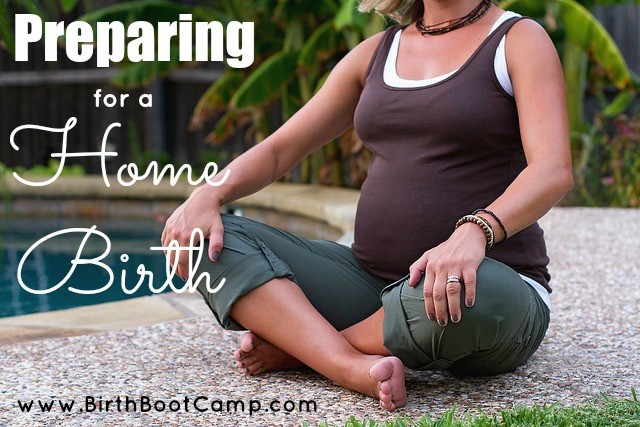

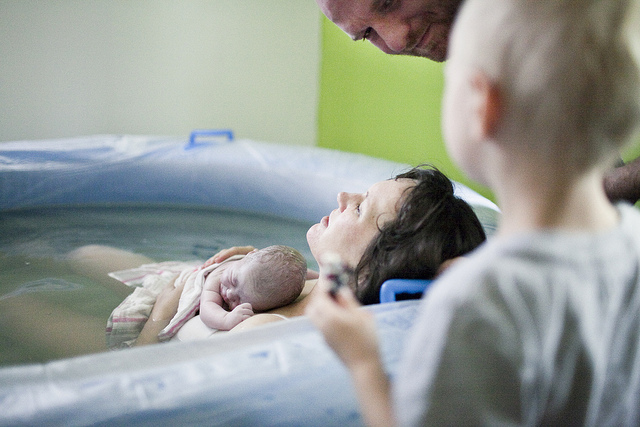



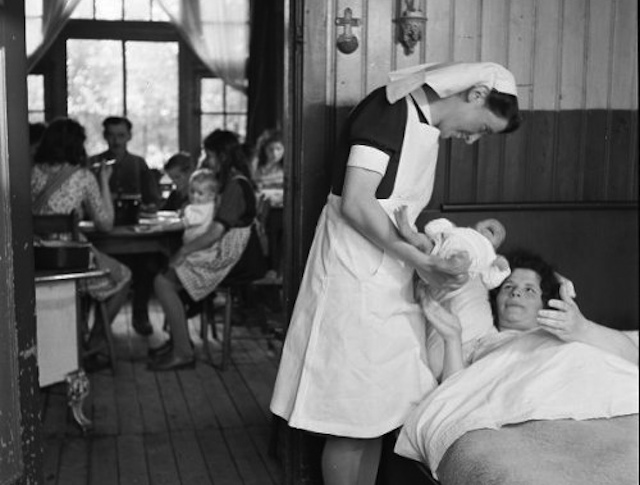
























 .
.

